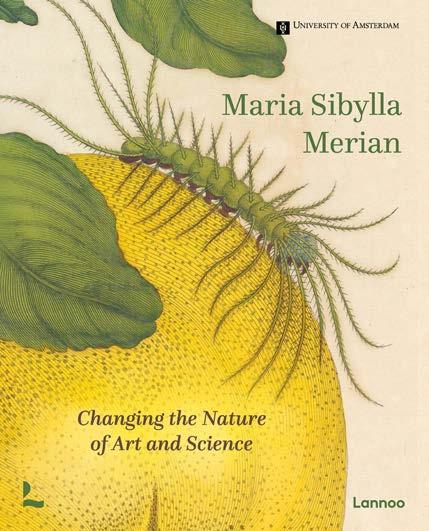
1 minute read
Maria Sibylla Merian
Changing the Nature of Art and Science
Marieke van Delft, Kay Etheridge, Hans Mulder, Bert van de Roemer & Florence Pieters
Beautifully visualized book with the latest insights into her life and work Merian inspired generations of scientists, artists and enthusiasts Gathers the contributions of 23 international experts
The revolutionary artist and scientist Maria Sibylla Merian (1647-1717) has come in the spotlight in recent years. The life and work of this German-born woman, who would later settle in the Netherlands, has been studied internationally by entomologists, botanists and historians and are a source of inspiration for contemporary artists and writers. In 2016, Lannoo Publishers, in collaboration with the National Library of the Netherlands, republished her masterpiece ‘Metamorphosis insectorum Surinamensium’ as a facsimile, which sold internationally over 10,000 copies.
This new book assembles the most recent scientific knowledge about this remarkable woman. The authors examine, among other things, Merian's pioneering work on the reproduction and development of insects, the methods and materials she used for her work, her remarkable journey to Suriname, her network of family, friends and patrons and her widespread influence on the history of art and science. Her work is compared to that of early modern and contemporary artists and scientists.
This book gathers the contributions of 23 international experts, most of whom are connected to the international Maria Sibylla Merian Society. The editorial team consists of Marieke van Delft, Kay Etheridge, Hans Mulder, Bert van de Roemer and Florence Pieters.
210 x 260 mm | 304 pages | 95,000 words full colour illustrations | hardcover | all rights available English manuscript in production
Maria Sibylla Merian Metamorphosis insectorum Surinamensium
German rights sold English manuscript available Merian succeeded brilliantly in creating a one-woman genre that addressed both the requirements of the naturalists for anatomical correctness and the aesthetic interests of the connoisseurs.
– Arthur McGregor, president of the Society for the History of Natural History










